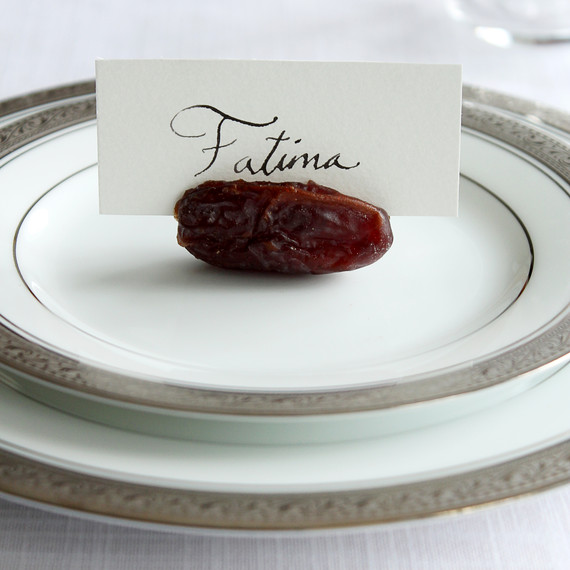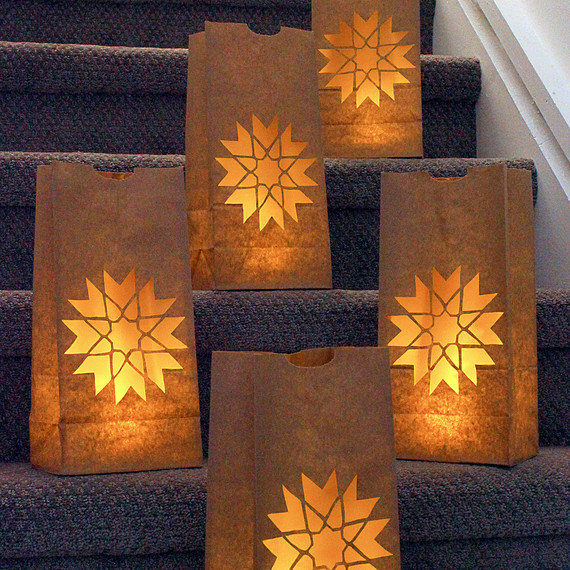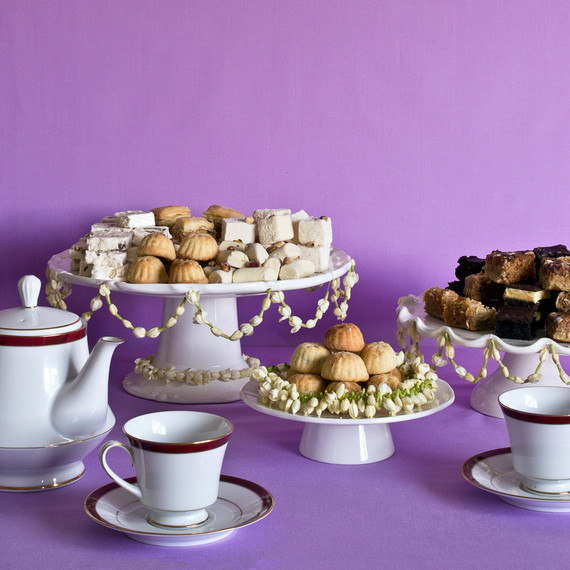

Dates have a deep symbolic meaning: The most traditional way to break fast during Ramadan is to do as the prophet Muhammad did –- with a single date. You can follow this tradition and personalize your table at the same time by making date place cards.
For each of your guests, write their name on a 3-inch-by-1.5-inch place card. Make a slit lengthwise in the date with a knife, and remove the pit. Then, insert the place card into the slit. Medjool dates are recommended, as they are bigger and can better accommodate a sizable place card, but any type of date will do. After sunset, each guest can remove the name card and eat the date to break the fast.

Make the Carnation Luminaries
Give your home a special glow. These elegant luminaries merge two significant symbols: the carnation and the eight-pointed star. Both are commonly seen in Islamic art and architecture.
As told by Aman, the eight-pointed star relates to a verse in the Quran, which states that eight angels will uphold the throne of Allah on the Day of Judgment. This image is consonant with the eight points of the star.
“In Islamic tradition, once God created the heavens and the earth, he rose over his throne and inscribed on it ‘My mercy supersedes my wrath.’ This creates a sense of hope of salvation,” she says, “hence why I see the eight-pointed star as a symbol of hope.”
In the center of the design, this eight-pointed star blossoms out into a carnation. This flower is a reminder of the gardens of paradise and spiritual purity.

Make the Jasmine Garlands
The end of Ramadan is marked by the celebration of Eid al-Fitr, when the dawn-to-dusk fasting is followed by a feast among family and friends — which calls for a celebratory table setting.
Here, an array of whiteware dishes — piled high with date cookies, Turkish delight, Turkish nougat, baklava, and more — are dressed in garlands of jasmine buds. Jasmine is a beloved flower in many Muslim cultures. In literature, its fragrance acts as reminder of the beautiful flowers that await in the gardens of paradise. This gentle fragrance freshens the air without overpowering the aroma of the feast.